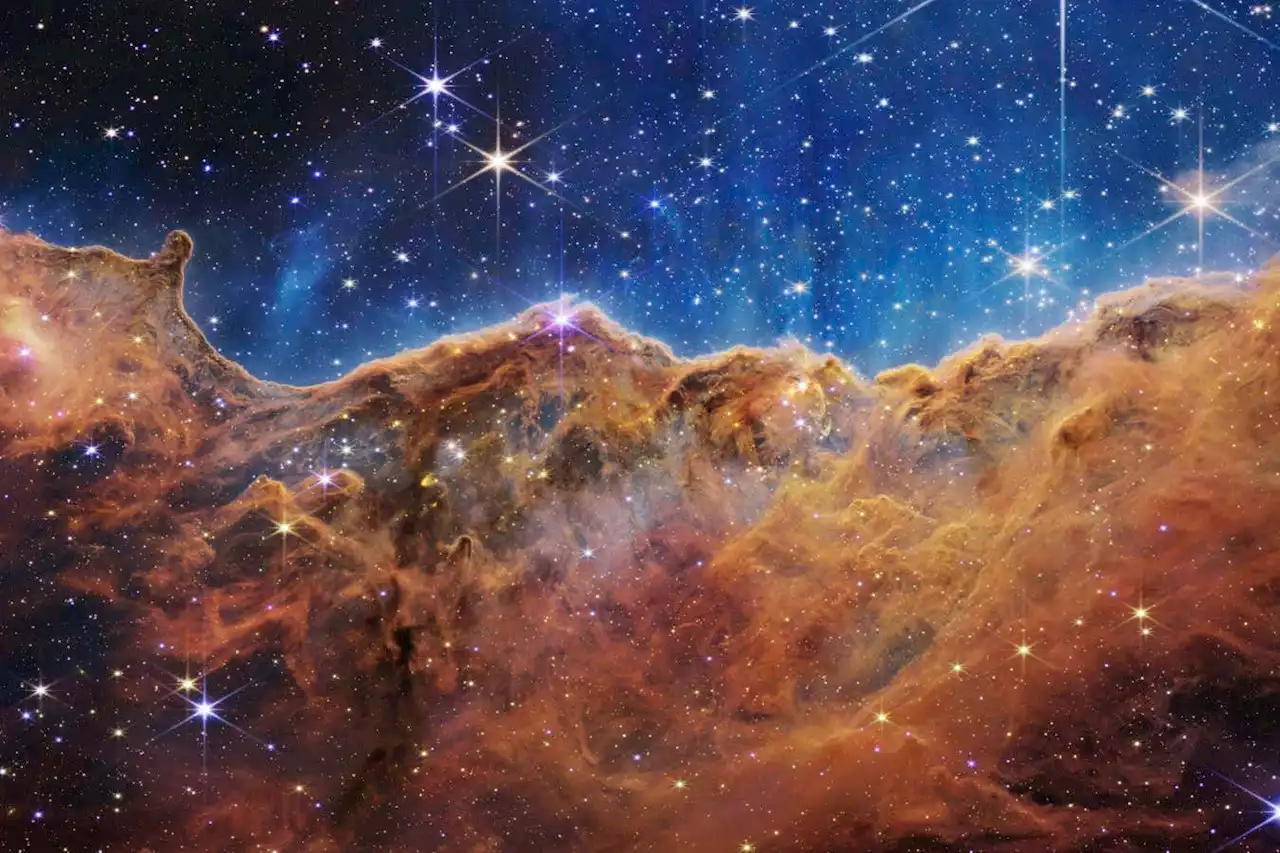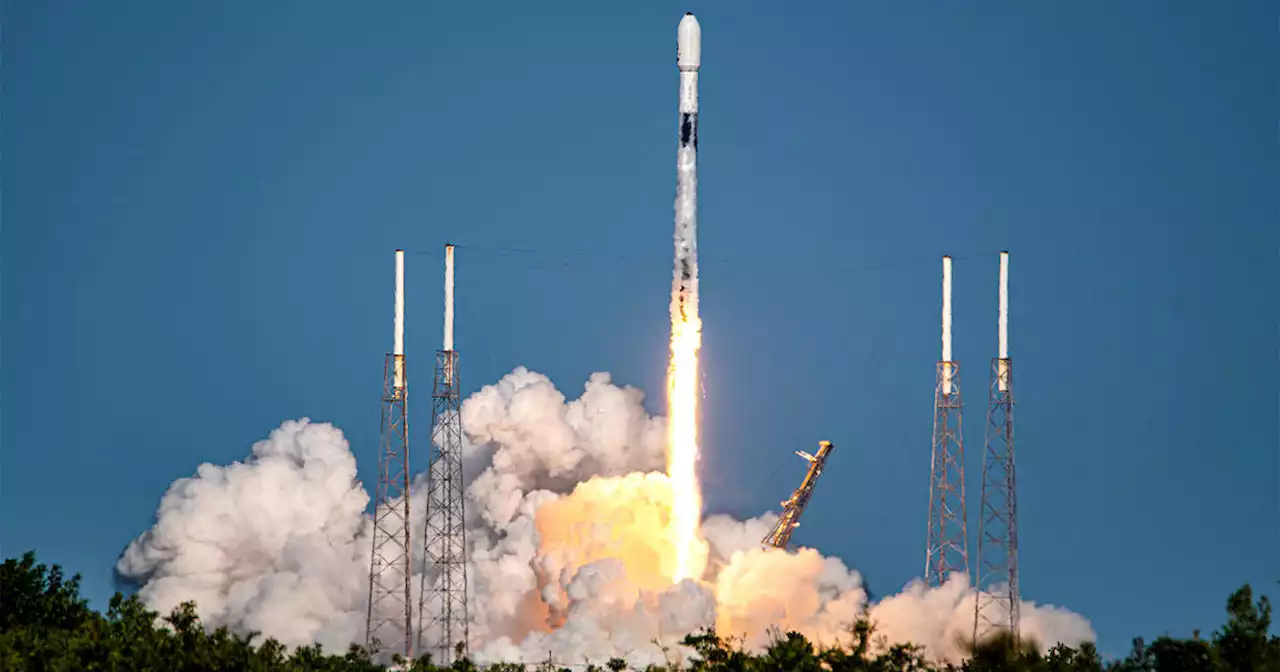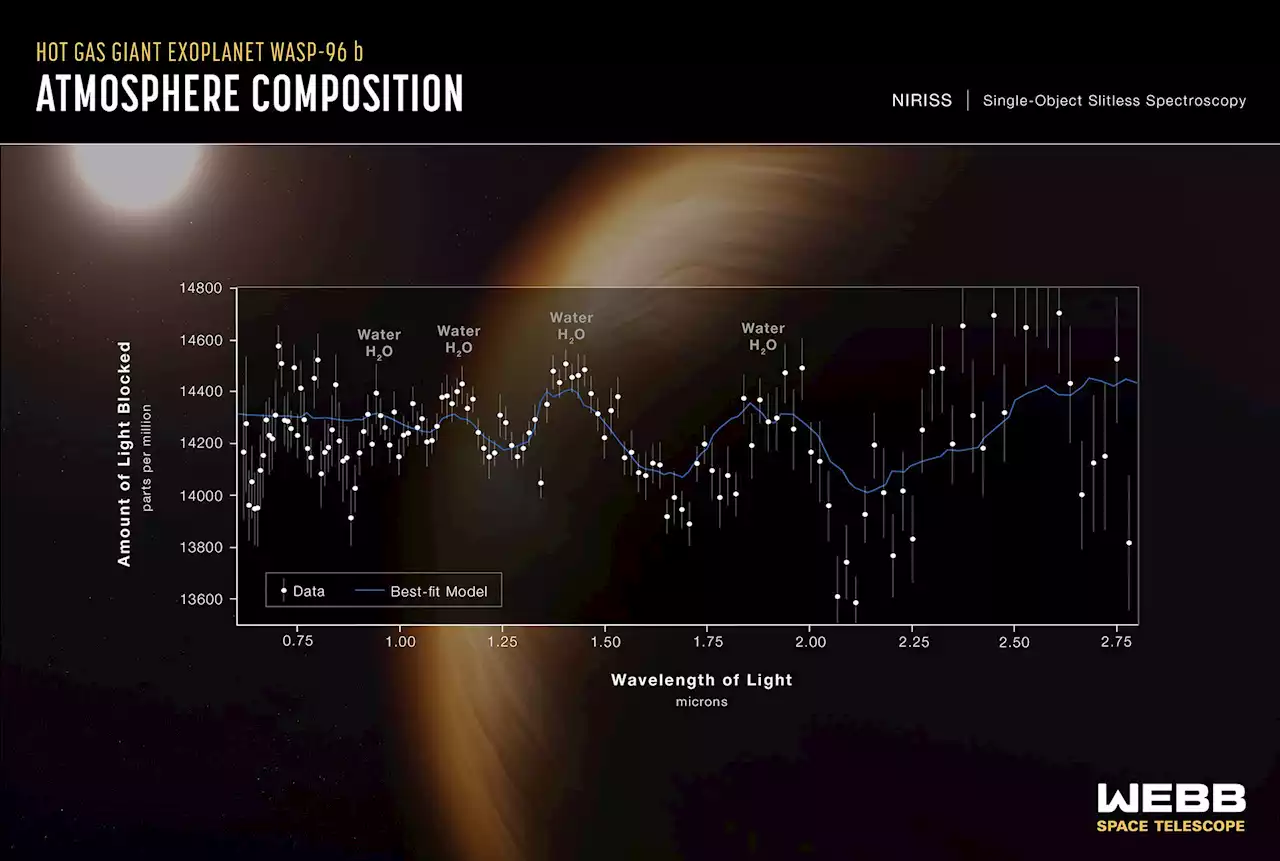JWST is Powerful Enough to See a Variety of Biosignatures in Exoplanets - by BrianKoberlein
While the idea is straightforward, putting it into practice is difficult. For one, starlight isn’t just a steady stream of light. There are flares, starspots, and other turbulence that causes noise in the signal. Even just detecting planetary brightness dips is difficult because of this. And while a planet will block less than a percent of the light, the amount of starlight passing through an exoplanet’s atmosphere is truly minuscule.
The team simulated atmospheric conditions for five broad types of Earth-like worlds: an ocean world, a volcanically active world, a rocky world during the high bombardment period, a super-Earth, and a world like Earth when life arose. They assumed all these worlds had a surface pressure of less than 5 Earth atmospheres, and calculated the absorption spectra for several organically produced molecules such as methane, ammonia, and carbon monoxide.
They found that with a reasonably thick atmosphere, the JWST, specifically its NIRSpec G395M/H instrument, could confirm the presence of these molecules within 10 transits of the planet. It would be easiest to do with super-Earths and other worlds with a thick atmosphere, but it is still possible for potentially habitable worlds.
Given the number of transits needed, our best shot at detecting biosignatures with JWST would be the close-orbiting worlds of red dwarf stars, such as the Trappist-1 system, which has several potentially habitable Earth-sized planets. Given the overlap between biological and non-biological origins, JWST observations might not be enough to confirm the existence of life, but this study shows that we are very close to that ability.
United States Latest News, United States Headlines
Similar News:You can also read news stories similar to this one that we have collected from other news sources.
 The JWST is already delivering on its promise to transform cosmologyAlmost a year after its first images were released, the James Webb Space Telescope is living up to the hype, and its price tag, by revolutionising our understanding of the universe
The JWST is already delivering on its promise to transform cosmologyAlmost a year after its first images were released, the James Webb Space Telescope is living up to the hype, and its price tag, by revolutionising our understanding of the universe
Read more »
 Prebiosignature Molecules Can Be Detected in Temperate Exoplanet Atmospheres with JWSTThe search for biosignatures on exoplanets connects the fields of biology and biochemistry to astronomical observation, with the hope that we might detect evidence of active biological processes on worlds outside the solar system. Here we focus on a complementary aspect of exoplanet characterisation connecting astronomy to prebiotic chemistry: the search for molecules associated with the origin of life, prebiosignatures. Prebiosignature surveys in planetary atmospheres offer the potential to both constrain the ubiquity of life in the galaxy and provide important tests of current prebiotic syntheses outside of the laboratory setting. Here, we quantify the minimum abundance of identified prebiosignature molecules that would be required for detection by transmission spectroscopy using JWST. We consider prebiosignatures on five classes of terrestrial planet: an ocean planet, a volcanic planet, a post-impact planet, a super-Earth, and an early Earth analogue. Using a novel modelling and detection test pipeline, with simulated JWST noise, we find the detection thresholds of hydrogen cyanide (HCN), hydrogen sulfide (H2S), cyanoacetylene (HC3N), ammonia (NH3), methane (CH4), acetylene (C2H2), sulfur dioxide (SO2), nitric oxide (NO), formaldehyde (CH2O), and carbon monoxide (CO) in a variety of low mean molecular weight (|5) atmospheres. We test the dependence of these detection thresholds on M dwarf target star and the number of observed transits, finding that a modest number of transits (1-10) are required to detect prebiosignatures in numerous candidate planets, including TRAPPIST-1e with a high mean molecular weight atmosphere. We find that the NIRSpec G395M/H instrument is best suited for detecting most prebiosignatures.
Prebiosignature Molecules Can Be Detected in Temperate Exoplanet Atmospheres with JWSTThe search for biosignatures on exoplanets connects the fields of biology and biochemistry to astronomical observation, with the hope that we might detect evidence of active biological processes on worlds outside the solar system. Here we focus on a complementary aspect of exoplanet characterisation connecting astronomy to prebiotic chemistry: the search for molecules associated with the origin of life, prebiosignatures. Prebiosignature surveys in planetary atmospheres offer the potential to both constrain the ubiquity of life in the galaxy and provide important tests of current prebiotic syntheses outside of the laboratory setting. Here, we quantify the minimum abundance of identified prebiosignature molecules that would be required for detection by transmission spectroscopy using JWST. We consider prebiosignatures on five classes of terrestrial planet: an ocean planet, a volcanic planet, a post-impact planet, a super-Earth, and an early Earth analogue. Using a novel modelling and detection test pipeline, with simulated JWST noise, we find the detection thresholds of hydrogen cyanide (HCN), hydrogen sulfide (H2S), cyanoacetylene (HC3N), ammonia (NH3), methane (CH4), acetylene (C2H2), sulfur dioxide (SO2), nitric oxide (NO), formaldehyde (CH2O), and carbon monoxide (CO) in a variety of low mean molecular weight (|5) atmospheres. We test the dependence of these detection thresholds on M dwarf target star and the number of observed transits, finding that a modest number of transits (1-10) are required to detect prebiosignatures in numerous candidate planets, including TRAPPIST-1e with a high mean molecular weight atmosphere. We find that the NIRSpec G395M/H instrument is best suited for detecting most prebiosignatures.
Read more »
 Chinese company unveils 'world's most powerful' hydrogen locomotiveChina has built what it says is the world’s most powerful hydrogen-powered locomotive, rolling stock that state media suggests has potential to replace most fossil fuel engines in service.
Chinese company unveils 'world's most powerful' hydrogen locomotiveChina has built what it says is the world’s most powerful hydrogen-powered locomotive, rolling stock that state media suggests has potential to replace most fossil fuel engines in service.
Read more »
 All 10 Thor Villains In The MCU Ranked Weakest To Most PowerfulThor has fought his fair share of villains in the MCU from Dark Elves to his own family members, and each villain came with their own strengths.
All 10 Thor Villains In The MCU Ranked Weakest To Most PowerfulThor has fought his fair share of villains in the MCU from Dark Elves to his own family members, and each villain came with their own strengths.
Read more »
 SpaceX launches powerful Indonesian communications satelliteSpaceX launched a powerful Indonesian communications satellite Sunday, the linchpin in a $550 million project to provide high-speed internet access to schools, medical centers and thousands of public and government facilities across the island nation.
SpaceX launches powerful Indonesian communications satelliteSpaceX launched a powerful Indonesian communications satellite Sunday, the linchpin in a $550 million project to provide high-speed internet access to schools, medical centers and thousands of public and government facilities across the island nation.
Read more »
